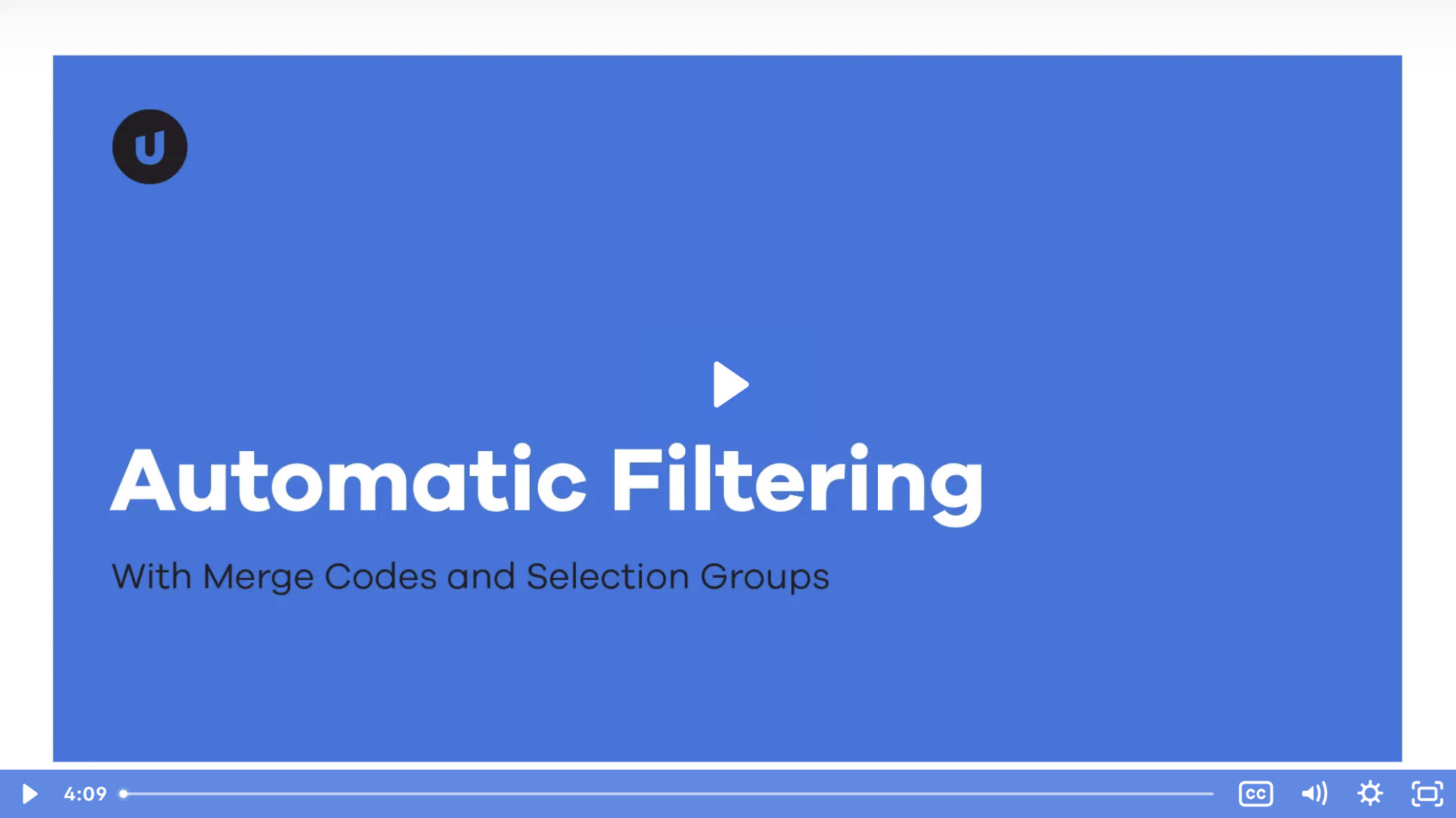Map merge codes and selection groups
Mapping custom metadata fields to one or more selection groups and data entry fields improves the search results for AutoFill, AI Assist, and Search Mode. Once correctly mapped, searches will automatically filter out irrelevant content based on users' Project-level selections that aid in finding the right content, such as: products and/or services, region, industry, and company size.
Example: Find content that is available to be used in the United States and include any other content that is not limited to a specific region in the search results. This search would auto filter / exclude any content that is tagged for another region, such as Mexico or Canada. To do this, ensure that the custom metadata has been mapped to the "Region" merge code and that the "United States" is listed and matching within the dropdown values. Create or open a project using a Document Type that contains the "Region" field in its Data Entry section. Select "United States" from the region dropdown field. Once an RFP questionnaire is loaded and a search is run, content tagged for the "United States" region and any content without a region tag would be found. Any content tagged specifically for another region would be excluded from the search results.
- Create new or edit existing custom metadata.
- Navigate to the Merge Code Mapping and/or Selection Group Mapping tabs.
- Locate the desired merge codes and selection groups within the grid by entering text into the search box at the top right of the grid, and clicking the Search
 icon or Enter. To re-display all grid rows, delete the entire entry in the box by clicking the X.
icon or Enter. To re-display all grid rows, delete the entire entry in the box by clicking the X. - Use the advanced filters to display specific rows quickly on the grid.
- Hover over the column header until you see the Filter
 icon appear.
icon appear. - Click the Filter
 icon to display the following dialog to set filtering parameters:
icon to display the following dialog to set filtering parameters:- Text Columns: Select either Contains All, Contains Any, Matches Any, Matches Exactly, Starts with, Ends with, Is Empty, Is Not Empty, or Does Not Contain from the Operator dropdown menu. The Contains All, Contains Any, Does Not Contain, and Matches Any operators allows you to enter more than one value by pressing the Enter key after each value. The Starts with and Ends with operators allow you to enter a text value to find. The Is Empty and Is Not Empty operators do not require a value.
- Numeric Columns: Select either Equals, Greater than, Less than, Greater than or equal to, Less than or equal to, Not Equal to, Between, Matches Any, Is Empty, or Not Empty from the Operator dropdown menu. The Between operator shows two fields for the starting and ending values of the range you want to find. Is Empty and Not Empty operators do not require a value. All other operators require a single value.
- Click Apply. To clear the filter, click the Clear Filter
 icon in the header, and then click Clear. You can also click out of the filter dialog to close it.
icon in the header, and then click Clear. You can also click out of the filter dialog to close it.
- Hover over the column header until you see the Filter
- To sort columns chronologically or alphabetically, click the column header name. The rows will display in ascending order. To switch from ascending to descending order, click the selected column header name again.
- At the bottom right of the grid, use the page scrolling controls (First page, Previous page, Next page, Last page) to move between pages of records in the grid. Use the "Rows per page" dropdown menu to select the number of rows that you want to display on the grid.
- Select your desired grid merge codes and selection groups using the checkboxes or by clicking the rows and using CTRL+CLICK or SHIFT+CLICK to select multiple rows.
Tip: On the Selection Group Mapping tab, the "Ancestry" column shows the top-level group of the selection component that the listed group is contained within (e.g. "Target Market > Business Issues"). The "Location" column lists the Doc Types that the selection group is used within (e.g. "Formal Proposal, Formal Presentation").
Caution: Ensure that the custom metadata that has been mapped matches the exact spelling of any values in the corresponding merge codes and/or selection groups (e.g. the "Region" field would not map correctly if the merge code listed "United States" as a dropdown value and the custom metadata listed "USA").
